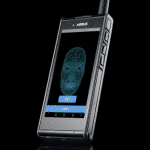Clients in the banking industry are facing unprecedented disruption. Customer expectations are forcing the banks to drive significant investments in digital transformation. Competition through digital capabilities is shifting the economic value to the front office.
Increasing regulatory requirements (i.e. with AML, GDPR, PSD2) force the banks to review their operating models, open themselves to customers and partners to avoid non-compliance penalty fees.
Next generation banking business models are emerging based on different banking platform models (technology, process, and marketplace).
There are only a few digital services that could be implemented for any of these banking platform models. Amongst them, the anti-fraud biometric solution not only leverages the latest biometric development to improve authentication process, but also can help the bank to improve security and reduce fraud, whilst complying with the increasing regulatory requirements.
The anti-fraud biometric solution provides the full scope of technical requirements including behavioral and multi-factors schemes for any device and operating system. It also allows the use or combination of any biometry by pair or based on data patterns to provide intelligent authentication.
Based on historical information, risk-based authentication, location and predictive analytical patterns, a bank could then trigger the anti-fraud biometric service to protect their customers and partners or secure a transaction.
The biometric multi-factor carrousel runs on any smartphone, tablet and PC on iOS/Android/Windows with Face recognition, Voice recognition, Lock Pattern Behavioural, Fingerprint or Keystroke Dynamics Behavioural.
Further, the back-end monitoring server supports up to a few thousands Transactions per second depending on the Biometrics selected, and can therefore sustain a complete International Bank Transaction secure ow and allow the CSO to monitor the system performance, and the effectiveness in terms of FAR, EER and adjust each biometrics threshold to the global customer’s profile, so as to obtain adequate results.
This digital functional service could help with customer requirements in any banking segment (i.e. for final consumer, internal usage, retail and payment, corporate and Small & Medium Enterprise, private banking, trading, etc) to provide trust and transparency in any kind of interaction or transaction.
It sustains the bank compliance with PSD2 (Payment Service Directive 2) regulation, requiring a two Factor Authentication for certain types of transaction. At the same time, it sustains the bank compliance with GDPR (General Data Protection Regulation) regulation, providing an anonymized database with no customer data recorded and stored. It could also help to improve and speed up the AML/KYC (Anti Money Laundering / Know Your Customer) regulation, especially at the Customer Due Digilence /Enhanced Due Digilence step.
In an open banking marketplace ecosystem, we may also consider leveraging the anti-fraud biometric service for automatic partner or client onboarding. Basically, the anti-fraud biometric component could be plugged into any existing business process of the bank to ensure privacy, trust, security or be extended to an open banking marketplace business model approach.
From a technical platform standpoint, the solution could either be deployed on premises or as a cloud-native platform supporting the hybrid cloud transformation that all banks are currently undertaking.
Biometric enrolment provides a high level of privacy with an OTP/QR Code; through the complete process of authentication, biometric data is desensitized with an anonymous pro le. The resulting barcode is made from a non-reversible engineering model which provides very strong protection for stored biometrics compared to classical templates. In addition, biometrics can be deselected and the threshold adjusted for typical user’ pro les directly from the back-end with a monitoring system.
“The multi-factor biometric solution defends corporate users against massive fraud attack and is a serious alternative to multiple and complicated passwords.”
The multi-factor biometric solution defends corporate users against massive fraud attack and is a serious alternative to multiple and complicated passwords. For instance, a treasurer will prepare a wire transfer on a Windows PC authenticating his own biometrics; the transaction will be validated by an executive on his smartphone with his own set of biometrics. This makes the transaction extremely secure with two different biometric barriers to jump which is nearly impossible for hackers.
Installation wise, the multi-factor authentication system routes an API call to an Application which makes the system easy to maintain and upgrade; using multiple SDKs is a real pain and difficult to maintain, increasing the cost of maintenance.
Artificial Intelligence can then be applied, for example, to improve fraud and financial crime patterns
leveraging additional data provided by the anti-fraud biometric platform in accordance with national or international laws and regulations.
United Biometrics, together with IBM, jointly developed the anti-fraud biometric open banking platform and is now in first client deployment phase.
Richard CADAPEAUD is the Banking Center Leader at IBM Global Industry Solution Center Nice-Paris.
International Business Machines Corporation (IBM) is a global technology company. The Company operates through five segments: Cognitive Solutions, Global Business Services (GBS), Technology Services & Cloud Platforms, Systems and Global Financing.
Christopher RICHARD and Yves CHEMLA are Co-Founders of UNITED BIOMETRICS.
United Biometrics is an IBM Certified Partner architecting and developing a strong multi-factor authentication platform solution for Banks, Governments & Defense, Enterprises, Carriers and Internet Players losing money or service capacity caused by large cyber-attacks and intrusions
Source: Cyber Startup Observatory




